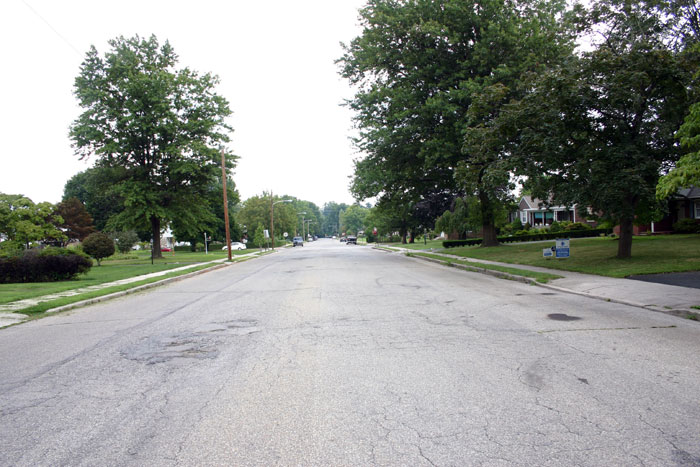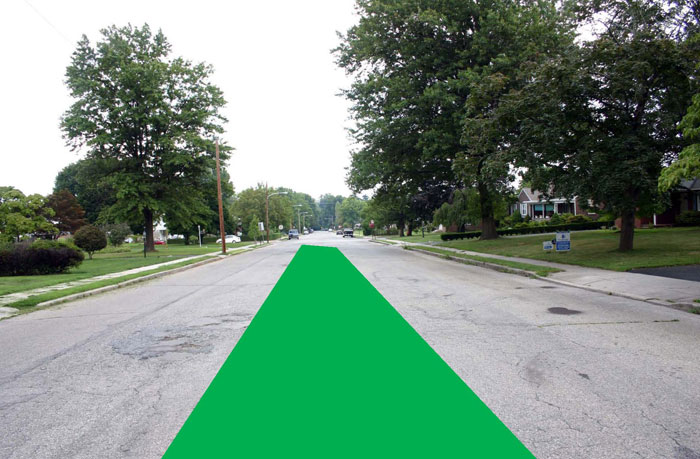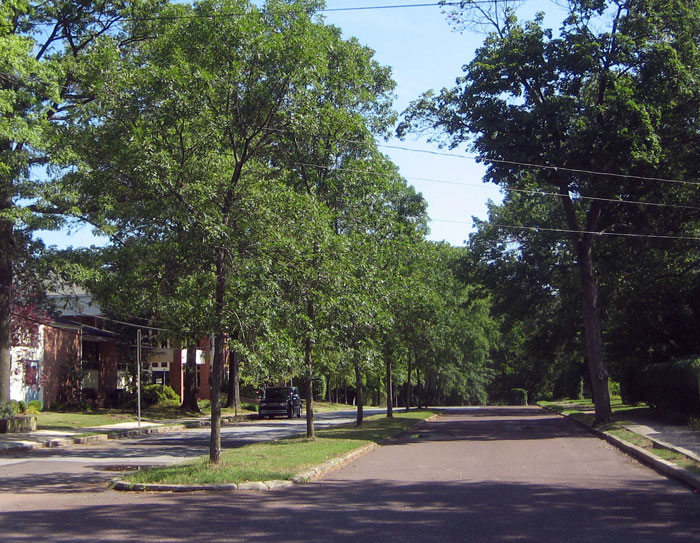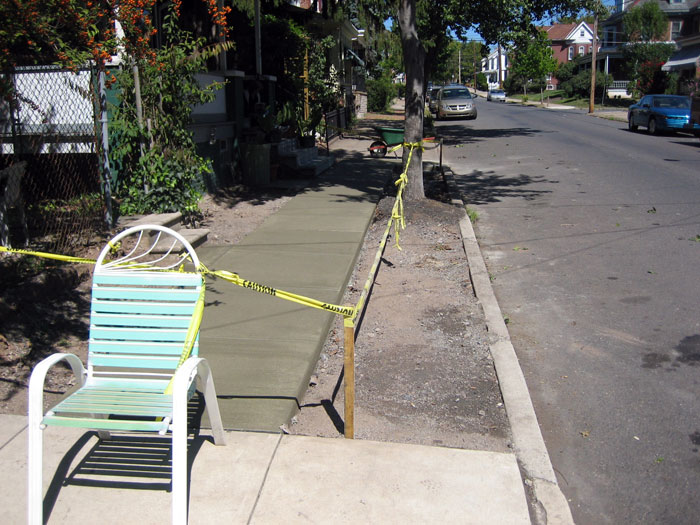Less is more!
Every American city and town has far more pavement than needed. We've paved over much of our land for streets and parking lots, making them all much larger than they need to be. Streets and sidewalks take up about 25 percent of the land in many cities and towns, not to mention land consumed by parking lots.
We devote far more land to asphalt and concrete than necessary. An important way to make sidewalks more compatible with trees is to simply rip up excess amounts of impervious surface.
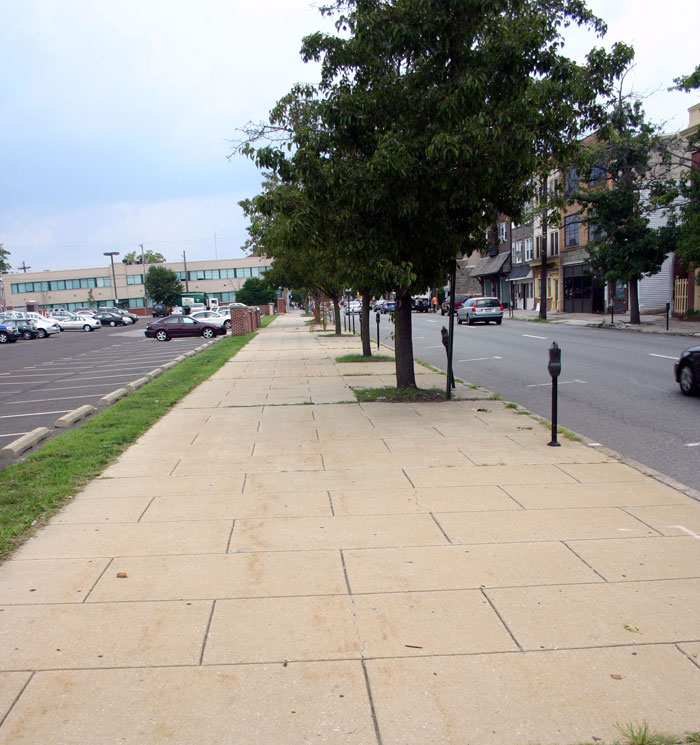
Sidewalks need to be narrowed
Consider this overly wide sidewalk, above, in Norristown, a small town outside Philadelphia. The sidewalk is wide enough to accommodate a Mahattan-sized crowd, but has few pedestrians.
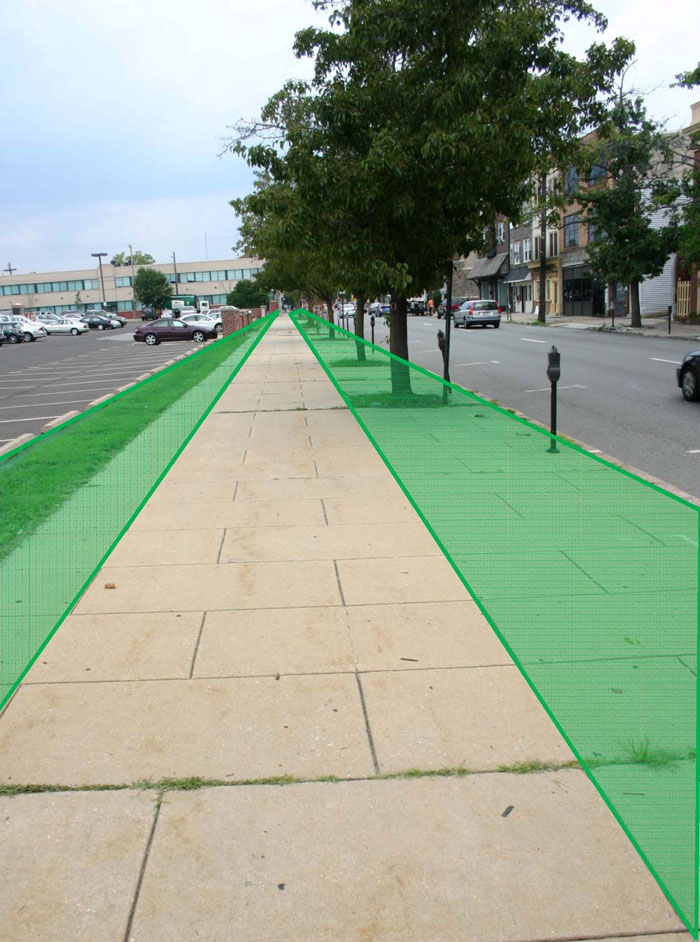
Excess concrete removed
By removing excess concrete, we can absorb far more rain water and make room for more trees.
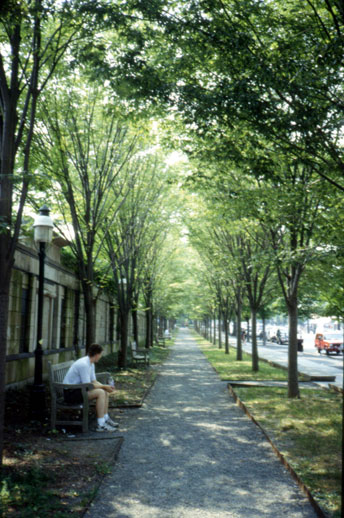
Downtown Princeton
By removing excess sidewalk and planting a double row of trees, downtown Princeton has created a park-like atmosphere on Nassau Street adjacent to Princeton University.
This street is far too wide
This typical suburban street is about twice as wide as it needs to be. Note there are only a few cars parked on the street in the distance. The houses all have driveways, and there is virtually no traffic on the street. So why so much asphalt?Place a median in the center!
Installing a green median in the center will provide a place for trees, eventually creating a canopy over the entire street. It will slow down auto traffic and increase safety for cars and bicyclists.
Median with trees
Notice how a median adds beauty and safety to a street that would otherwise be a wide expanse of asphalt, encouraging speeding and excess storm water runoff.
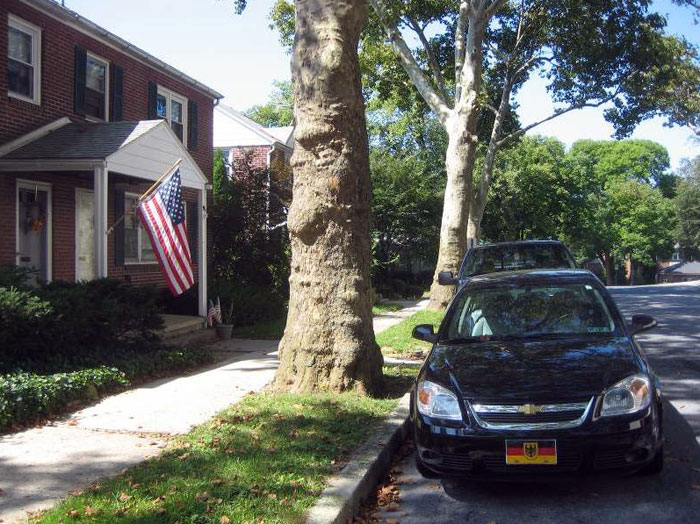
Narrow the sidewalk, provide tree lawn
A strip of grass or other vegetated area, often known as a tree lawn, provides a place for trees to grow and provides a barrier between car traffic and pedestrians. These four-foot-wide sidewalks, above, are sufficiently wide for a residential area.
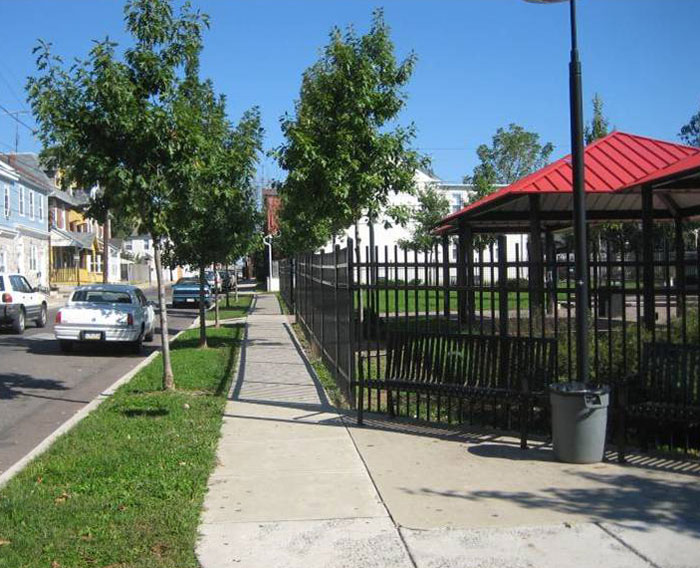
New sidewalks need tree lawns
Subdivision ordinances should require tree lawns from five to eight feet wide.Retrofitting sidewalks with tree lawns
This property owner has realized his sidewalk has a lot more concrete than necessary. Four feet of concrete have been removed permanently, creating a tree lawn, leaving another four feet of concrete for pedestrians,
Even better would be replacing concrete with bricks or asphalt.

